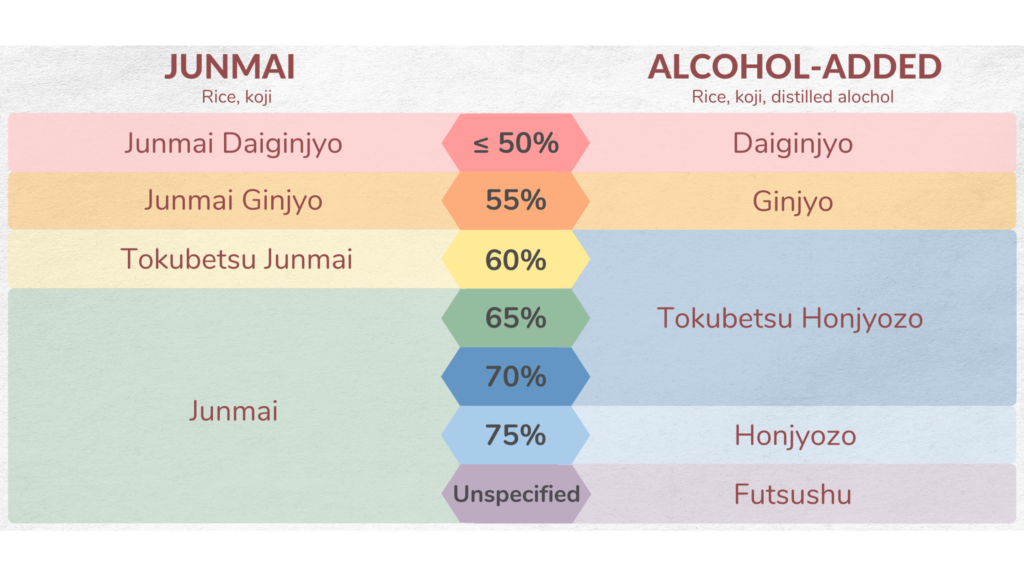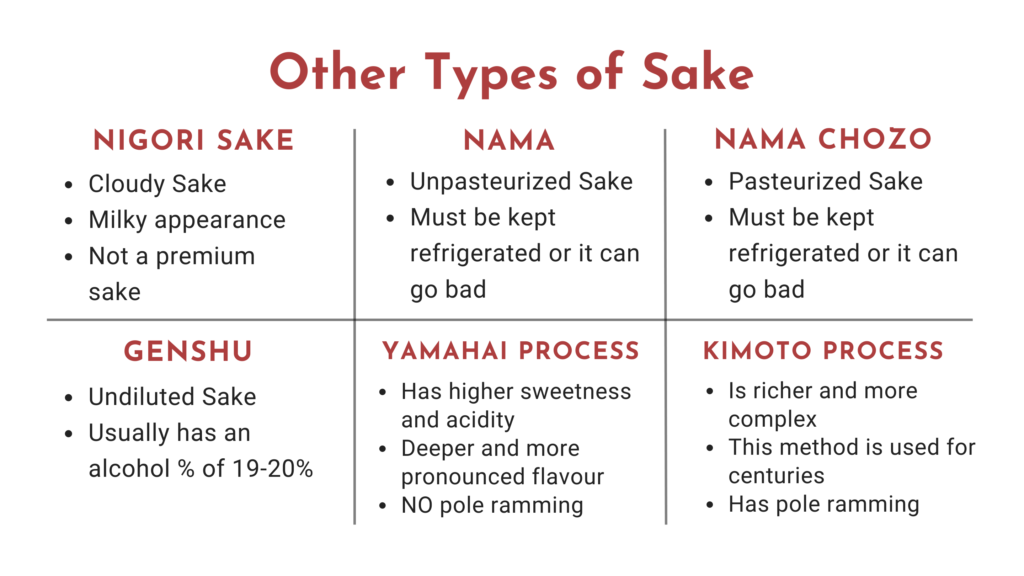Types of Sake
Don’t be intimidated by Japanese sake terms or the different classifications of sake. Here’s an easy guide to help you understand what they mean. Find your favourite type of sake easily with our simple guide.
Sake can be split into two main groups: Junmai (pure rice) and alcohol-added sake.
Junmai 純米
Junmai 純米 sake is made solely from rice and there is no addition of distilled alcohol or additives during the brewing process. The word junmai literally translates to ‘pure rice’. The different types of sakes that can be classified under this category are mainly Junmai Daiginjyo, Junmai Ginjyo, and Tokubetsu Junmai. Therefore, it can be said that the classification is due to the difference in their rice polishing ratio, which determines its ‘quality’. As more rice is needed to brew a junmai sake, it is often deemed ‘more expensive’. However, there are also other factors that contribute to the difference in pricing.
Alcohol-added Sake
Any other sake without the word ‘junmai/純米’ in it, usually means that brewer’s alcohol has been added during the production. However, the addition of alcohol does not mean that such sake is lower in quality. It is a matter of taste to determine what kind of sake you would prefer. Added alcohol can even enhance aromas and achieve varying distinct flavours. The different types of sake under this category includes Daiginjyo, Ginjyo, Tokubetsu Honjyozo, and Honjyozo.

Classifications of Sake
Now you know about the difference between junmai and non-junmai sake, let’s learn more about some of the more common sake.
Junmai Daiginjyo 純米 大吟醸
- Regarded as the highest grade of sake
- Rice polishing ratio of 50% or less
- Has a lighter and more refined taste
- Best enjoyed chilled
Junmai Ginjyo 純米 吟醸
- Rice polishing ratio of about 55%
- Has a delicate, fragrant, and complex taste
- Best enjoyed chilled
Tokubetsu Junmai 特別純米
- Rice polishing ratio of 60%
- Varying flavour, usually light and subtle on the nose
- Best enjoyed either warm or at room temperature
Daiginjyo 大吟醸
- Rice polishing ratio of 50% or less
- With a similar polishing ratio as junmai daiginjyo, there would be similarity in terms of flavour profiles
- More refined in taste, with a slightly fruitier taste as compared to ginjyos
- Best served chilled.
Ginjyo 吟醸
- Rice polishing of about 55%
- Usually lighter and lower in acidity.
Tokubetsu Honjyozo/ Honjyozo 特別 本醸造/本醸造
- Sake added with brewer’s alcohol
- A reasonable level of acidity and umami
- Tokubetsu indicates a more highly polished rice/special rice used compared to regular honjyozo
- Easy to drink both warm or chilled
Nigori Sake 濁り酒
- Unfiltered sake, with rice solids still present
- Known as a ‘cloudy’ sake
- Cloudy with a sweet taste
- Best enjoyed cold
Other Types of Sake

However, do not let us stop you from enjoying your sake in any way you want. Try out various drinking methods and the various types of sake to find one that you truly enjoy. Learn more about the basics of sake, such as rice polishing ratio and sake meter value in our previous blog posts here.


